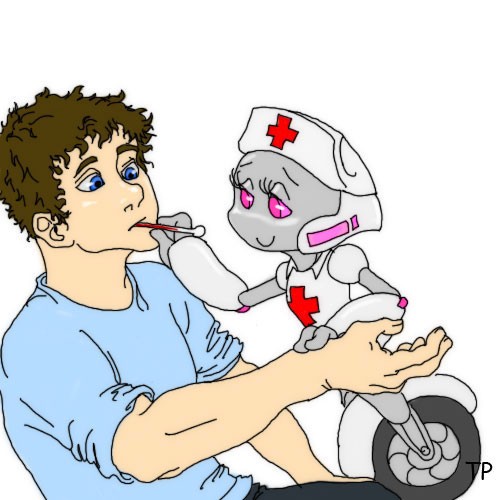
Nursing: First to automate calling a patient from a waiting room, identifying the patient (from a
photograph taken at reception and using facial recognition software), and guiding the patient (with a robot or by lights) to an examination room. [This challenge doesn’t get rid of nurses but simply relieves them of repetitive chores.]
Future Challenges:
1) En route to the patient room, a floor mat in the hallway that all patients walk through is able to accurately weigh the patient, even if the patient is accompanied by someone else. If patient is in a wheelchair, the make and model of the wheelchair are identified by the program and the wheelchair’s weight is subtracted from the patient’s weight.
2) En route to the patient room, another scanner along the above hallway is able to accurately measure the patient’s height. If the patient is in a wheelchair, the scanner can accurately measure the patient’s height while he or she is seated.
3) The patient’s temperature is measured remotely en route or in the examination room.
4) After the patient is in the examination room and the program has shut the room’s door (which the program opened for the patient), the program audibly asks the patient questions to determine what the patient thinks is wrong with himself or herself. This process is done elimination-style to try to isolate the problem and to ask standard clarification questions. If any information is obtained at the reception desk, the program uses that information, without asking for it again, as a starting point for further questions. All of this information (and the information collected elsewhere) is displayed on a screen outside the patient's room for the doctor or nurse practitioner to review. The information is only displayed to the doctor or nurse practitioner assigned to the patient and who swipes his or her ID card through a reader attached to the information screen.
5) While the nursing program asks the questions above, a robotic device measures the patient’s blood pressure and heart rate.
6) First to do Future Challenge #5 remotely. No touching the patient necessary.
7) When all of the above information has been obtained by the nursing program, a light outside the patient room turns on to let the doctor or nurse practitioner know the patient has been processed, that all of the patient’s information is available for viewing on the outside information screen, and that the patient is ready for his visit.
